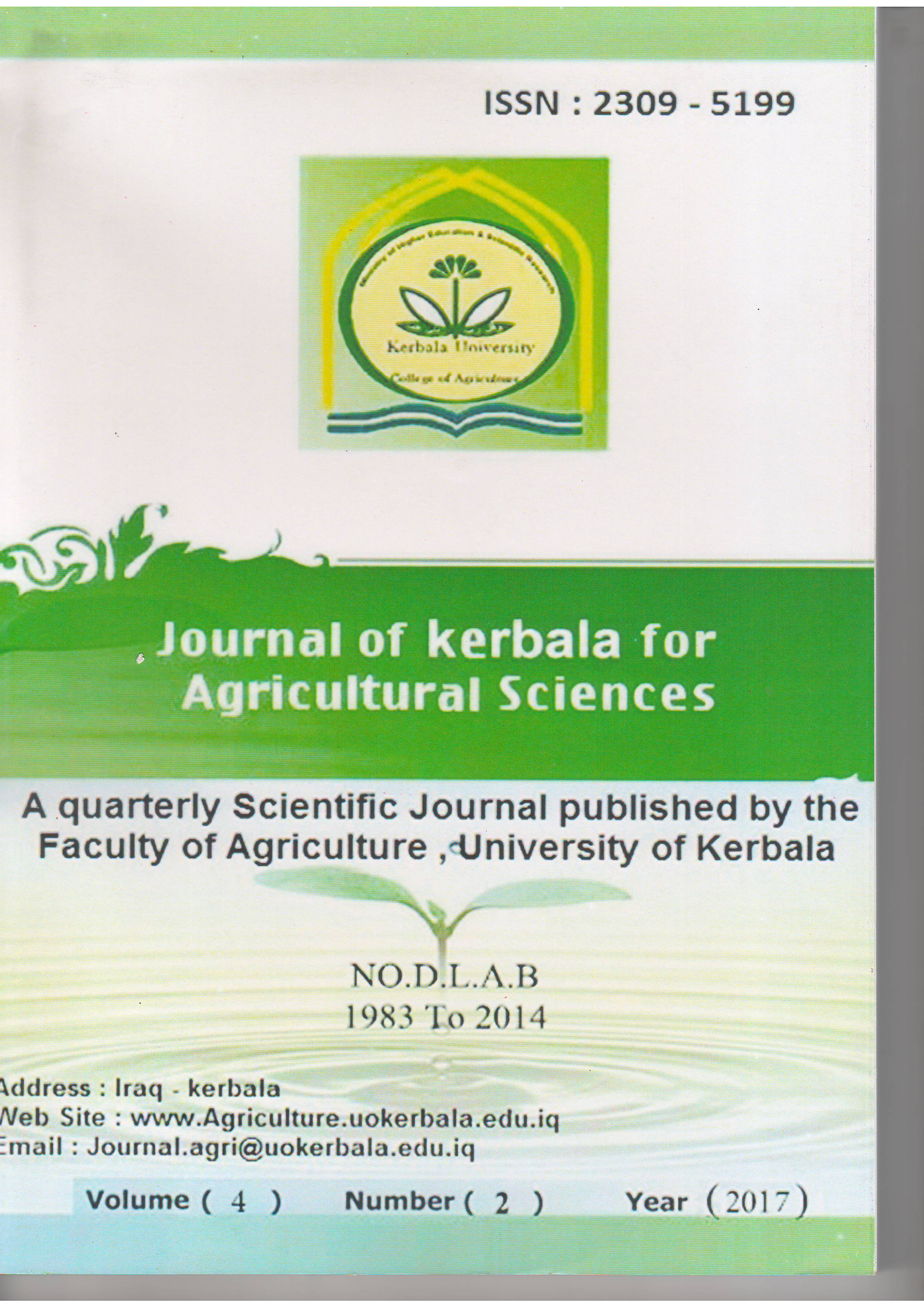Relationship between Leptin gene and some production traits in local Awasi sheep
DOI:
https://doi.org/10.59658/jkas.v4i2.163Keywords:
Awasi sheep- Leptin gene-Production traitsAbstract
This study had been conducted in the First Research Station for Agriculture College Muthana University and the laboratory of biological technique & practical analysis - Ministry of Science and Technology through the period 1/11/2015 to 1/07/2016. The aims of this study was to determine the genetic components of Leptin gene and explore the relationship of these components with a some of production for local Awasi sheep. The Genotypes had been different to the targeted coding area for Leptin gene according to the variation of the genetic packs that produced by the enzymatic digestion which had reached three genotype who are AA, AB and BB and their distribution ratios were 50.00, 43.33 and 6.67% respectively, and the variation between these ratios was highly significant, and the allele frequency was 0.72 and 0.28 for the allele A and B in series. The current study results shown that total milk production for Awasi sheep had been significantly affected (P<0.05) by the genotypes of Leptin Gene for the sheep that had pure genotype AA, as for milk period duration it had not been significantly affected by genotype variation. The fate and non-fate solid ratios had been significantly influenced where it had been at maximum in sheep’s milks that had the genotype BB (6.79 ±1.34%) and AB (11.05 ± 0.29%) for both parameters in series, while lactose and protein ratios had not been significantly affected by the genotype variation. It can be concluded through the study of the genotype of Leptin gene and its future it adoption to set the genetic rehabilitation strategies for sheep to maximize their economic income of sheep genotype selection and interaction breading projects which already achieved best economic parameters, Additionally, the application of this study on larger sample for many production seasons can give more accurate results to adopt exclusion and replacement strategy.
Downloads
Published
How to Cite
Issue
Section
License
Copyright (c) 2017 Copyright (c) 2024 is the Author's article. Published by the Journal of Kerbala for Agricultural Sciences under a CC BY 4.0 license

This work is licensed under a Creative Commons Attribution 4.0 International License.
Licensing Terms
All articles are published under a Creative Commons License and will be directed to the Creative Commons Attribution 4.0 International License (CC BY 4.0) That permits use, distribution, and reproduction in any medium, provided the original work is properly cited. This license also allows the work to be used for commercial purposes.
Use by both non-commercial and commercial users
This content is licensed under a Creative Commons Attribution 4.0 International (CC BY 4.0) license, permitting use by both non-commercial and commercial users. Individual users may access, download, copy, display, and redistribute the articles to colleagues, as well as adapt, translate, and text- and data-mine the content, subject to the following conditions:
- The author's moral rights, including the right of attribution and the right to protect their work from derogatory treatment, are respected.
- Where content in the article is identified as belonging to a third party, users must ensure that any reuse complies with the copyright policies of the owner of that content.
- If the article content is reused for research or educational purposes, users should maintain a link to the appropriate bibliographic citation, including the DOI and a link to the published version on the journal's website.

